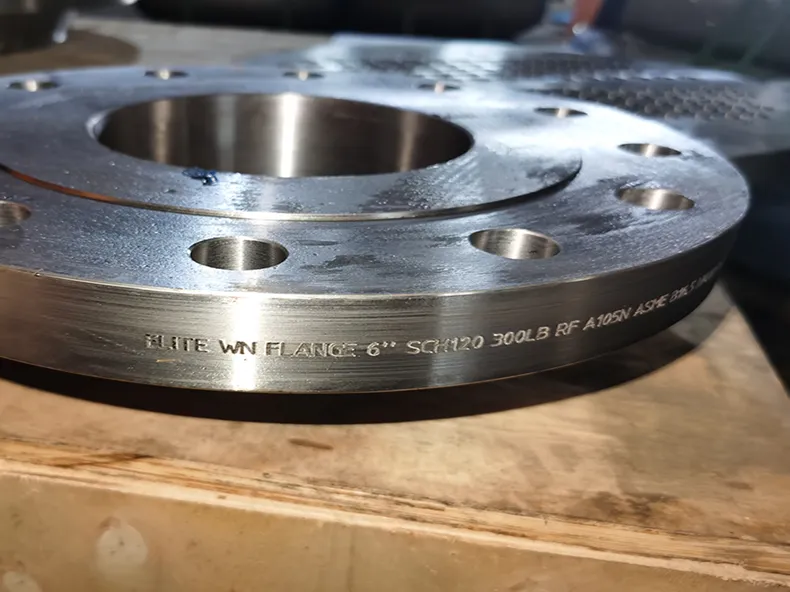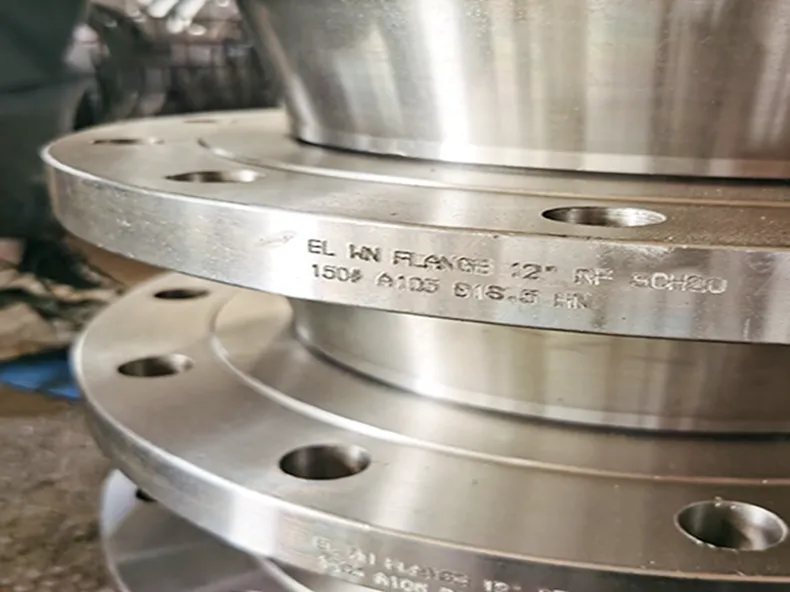Weld neck flange price varies depending on several factors including material, size, pressure rating, and manufacturing standards. Usually fabricated from carbon steel, stainless steel, or alloy steel, weld neck flanges are designed to withstand high pressure and extreme temperatures, rendering them appropriate for crucial applications in sectors oil and gas, chemical processing, and power generation.
The cost is influenced by the complexity of the manufacturing process, the grade of the raw materials, and additional features such as corrosion-resistant coatings. Consequently, costs can vary for smaller, low-pressure flanges to several hundred dollars for larger, high-pressure versions with specialized coatings or material grades.

Material Composition Of Weld Neck Flange Price
Carbon steel is frequently employed for weld neck flanges due to its strength and cost-effectiveness. Prices for carbon steel flanges are generally lower compared to other materials, but they may require additional treatments to enhance corrosion resistance.
Stainless steel flanges are more expensive due to their superior corrosion resistance and durability. They are ideal for applications where exposure to corrosive environments or high temperatures is a concern. Grades such as 304 and 316 stainless steel are commonly used, with 316 being more expensive due to its higher molybdenum content.
Alloy steel flanges offer a balance between strength, toughness, and corrosion resistance. They generally carry a higher cost compared to carbon steel but less than high-grade stainless steel. The specific alloy composition (e.g., chrome-moly alloys) can further impact the price.
Size And Dimensions Of Weld Neck Flange Price
Larger diameters increase both the material cost and the complexity of production.
Thicker flanges are needed for higher pressure ratings, resulting in higher material usage and cost.
The size of the bore affects the amount of machining required, influencing the price.
Pressure Rating Of Weld Neck Flange Price
Weld neck flanges are rated to withstand different pressure levels, indicated by classes such as Class 150, 300, 600, 900, 1500, and 2500. Higher pressure ratings involve more robust construction, thicker materials, and often more stringent testing, all of which contribute to higher prices.
Standards Of Weld Neck Flange Price
Ensures high quality and reliability, often required for critical applications.
Specifies dimensions, materials, and performance criteria.
German standards that are widely recognized in Europe and other parts of the world.
Standards used primarily in the UK and former British territories.
Provides global standards that ensure consistency and interoperability.

Surface Treatment And Coatings Of Weld Neck Flange Price
Galvanizing
Applying a zinc coating to protect against corrosion.
Painting
Using protective paints to prevent rust and environmental damage.
Electroplating
Applying a fine metal layer, like nickel or chromium, for improved resistance to corrosion and wear.
Passivation
A chemical treatment to remove contaminants and enhance the corrosion resistance of stainless steel flanges.
Customizations And Special Requirements Of Weld Neck Flange Price
Non-Standard Dimensions
Flanges with unique sizes or dimensions not commonly available.
Special Bolt Hole Patterns
Custom bolt configurations to match existing equipment.
Material Specifications
Unique material compositions tailored to specific applications.
High-Temperature Or High-Pressure Requirements
Enhanced designs to withstand extreme conditions.

Market Conditions And Raw Material Prices Of Weld Neck Flange Price
The fluctuating prices of raw materials, influenced by worldwide supply and demand patterns, geopolitical issues, and economic circumstances, can significantly impact the cost of weld neck flanges. For instance, a surge in steel prices due to supply chain disruptions or increased demand can lead to higher flange prices. Similarly, market conditions affecting the availability of exotic materials like Inconel or Hastelloy will influence the cost of flanges made from these materials.
Logistics And Lead Time Of Weld Neck Flange Price
Shipping Method
Air shipping is quicker but carries a higher cost than maritime or land transport.
Destination
Remote or difficult-to-access locations may incur higher shipping costs.
Manufacturer And Brand Of Weld Neck Flange Price List
The manufacturer’s reputation and brand are pivotal determining the price of weld neck flanges. Established manufacturers like Elite Piping Manufacture Co., Ltd. are known for our quality, reliability, and adherence to industry standards.
Such manufacturers may charge a premium for their products, reflecting their brand value, quality assurance, and customer service. On the other hand, lesser-known or new manufacturers may offer lower prices but might not provide the same level of assurance regarding product quality and performance.
By taking into account all these factors, the complex pricing landscape of weld neck flanges and achieve the best value for their investment.
GET IN TOUCH
Company:
Elite Piping Manufacture Co., Ltd.
Factory Address:
Office # 805, Building No. 6 Poly Metropolitan, Yongshum Town, Tongzhou District, Beijing, China.
Contact Person:
Michael
Contact Numbers:
+86 186 1829 1381
Email:
elite@elitepiping.com

